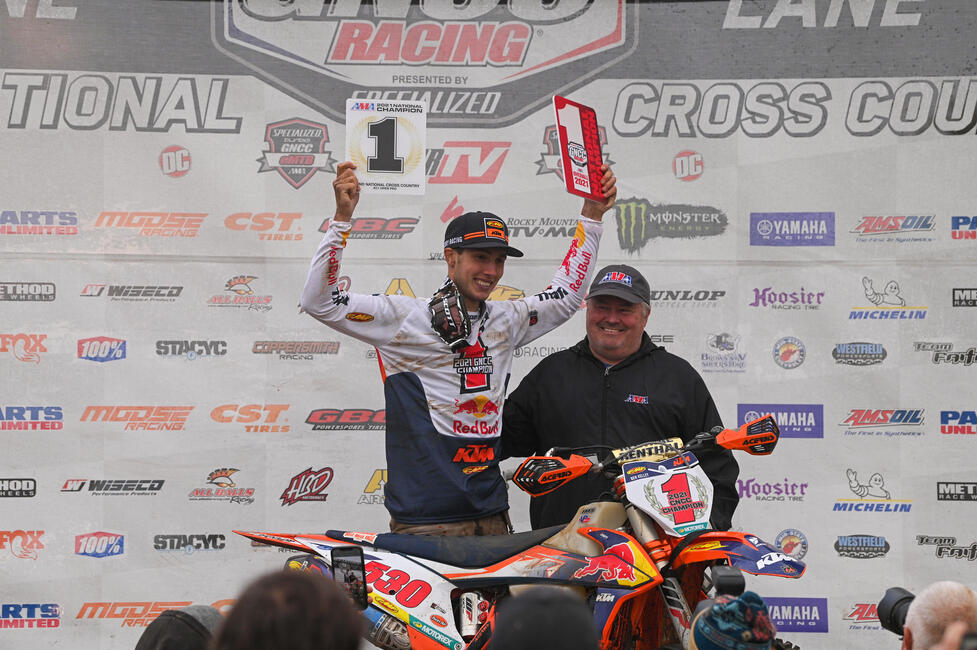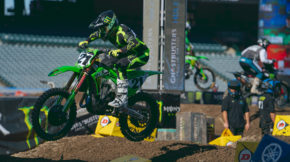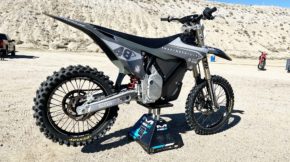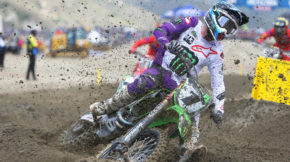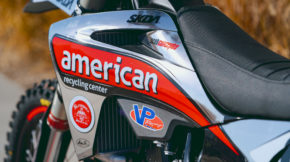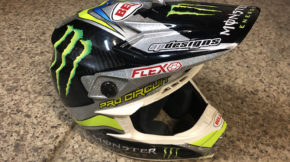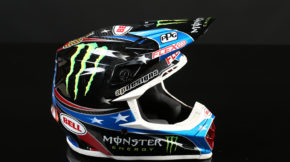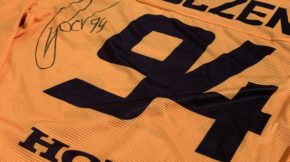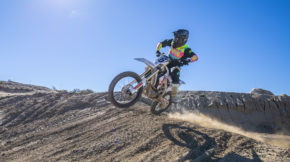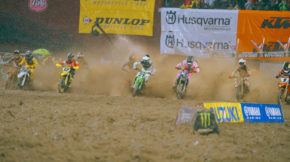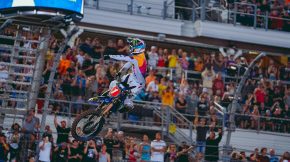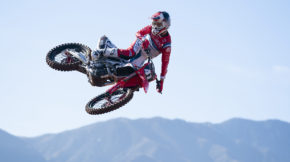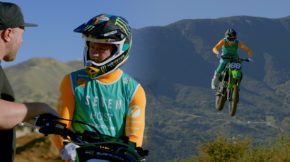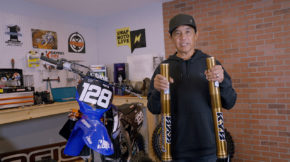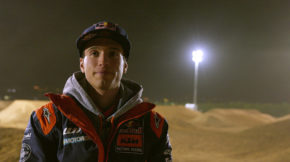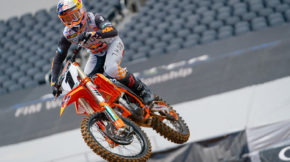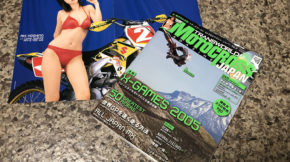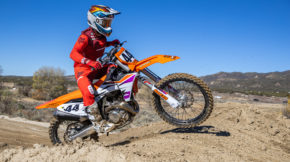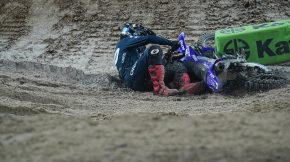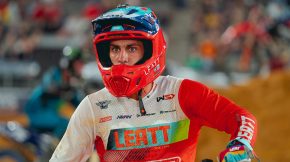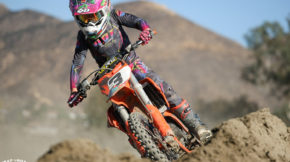What Happens In The Woods Of A GNCC | Kickstart
Share
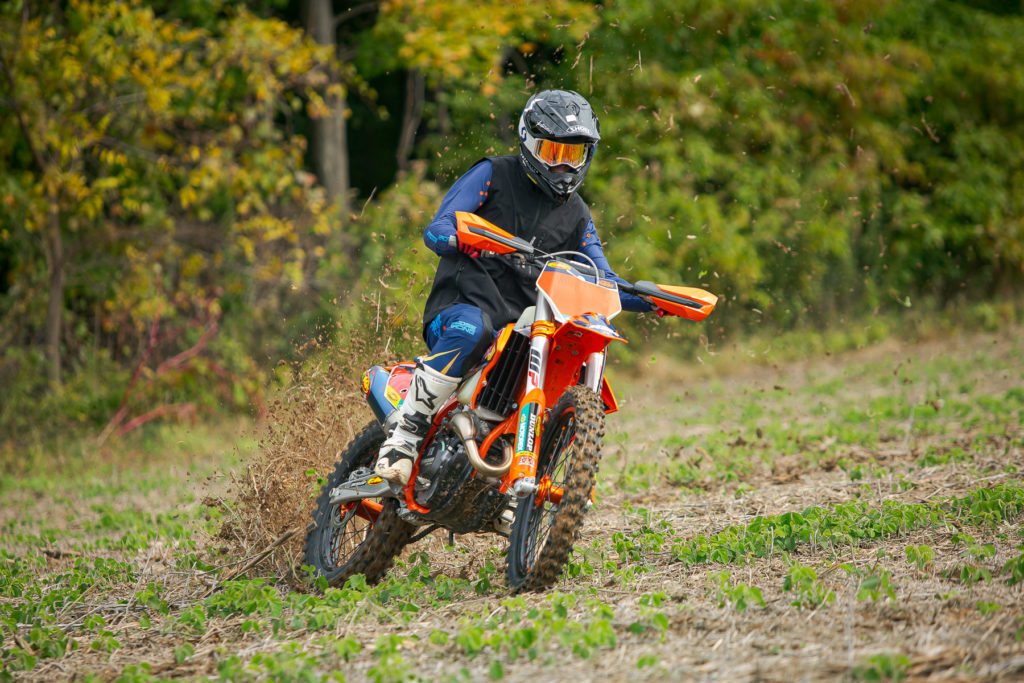
INSTAGRAM | @swapmotolive
INSTAGRAM | @swapmotolivedotcom
INSTAGRAM | @ktmusa
By Michael Antonovich
PHOTOS | Fant/Moore/Leads/Faint
The time between Rodney Tomblin’s call of “10 Seconds!” and Ricky Towrey’s wave of the green flag didn’t quite feel like the full count, and that might have been a good thing. Soaked to the core and aboard a 2022 KTM 350 XC-F Factory Edition, I was ready to find out what was waiting in the woods of Indiana for me and the hundreds of other riders at the 2021 Ironman GNCC. The engine fired up as soon as I hit the handlebar-mounted button, just like you’d expect of a machine with only a few minutes on its hour meter, and feelings of guilt accompanied the rev. These were the last spotless moments of this motorcycle’s existence because the following hours spent “competing” in the toughest, muddiest Grand National Cross Country Series race of recent memory sullied every inch of the orange bike.
Although motocross is the primary focus of SML, we try to keep an eye on everything related to off-road motorcycling, from trials to rally to hard enduro. GNCC has become one of our favorite follows in the last two years, thanks mainly to Racer TV live feed of every round, the skill of the competitors, and the power shift caused by Kailub Russell’s retirement. The all-time leader in wins/eight-time champion’s decision to stop meant that someone new would earn the XC1 title in 2021 for the first time in five years, but anyone who watched the series closely knew it’d probably come down to one of two riders: Ben Kelley or Stu Baylor.
You’d be hard-pressed to find two riders better matched for the rivalry than Kelley and Baylor. One is regarded for his fitness, dedication to training, and connection to the series’s biggest OEM; the other for his hardy physical figure, everyman attitude, and post-race beers. Both learned hard lessons in 2020 (Kelley had a shoulder injury ahead of the opening round, Baylor faced health issues/split from the Sherco factory team weeks into his deal/joined Yamaha) as Russell capped off his career, but by the final rounds of the season, they were fighting for wins and recognition as the heir apparent.
Amazingly, the two managed to stay close through the entire nine-month tour of the East Coast and headed into the last round with only a few points between them. Consistent finishes put Kelley at the top of the standings, Baylor’s bigger list of wins offset his one-race absence in the middle of the season. That on its own should have been enough excitement for the Ironman showdown.
Instead, a controversial post-race protest by Husqvarna at the Buckwheat 100 prompted race officials to dock several riders points, including four points for Baylor. This decision caused a rift in the GNCC world, as Kelley received criticism from fans who viewed KTM as an overreaching OEM while Baylor spoke up in defense of his friendly foe and made it clear that any issues between he/Yamaha/Kelley/KTM would be sorted out at Crawfordsville.
The idea of racing Ironman in an amateur class had been on my mind for a while. When swap ended my hiatus from all riding in 2013, I put together a list of motorcycle events to watch/ride/compete in should the opportunity ever arise, and the Indiana race’s popularity and proximity put it into the “most likely to happen” category. The allure of a cornfield to camp in, miles of woods to ride through, and one last weekend together before the long winter that draws thousands of ATV and motorcycle riders from around the Rust Belt makes Ironman a marquee event in the GNCC schedule, and I hoped to experience it firsthand.
I mentioned the idea to KTM employee/SML ally Jennifer Leads during Loretta Lynn’s amateur motocross week in August; JLeads had become an off-road aficionado from her role in KTM’s PR department and talked up her time spent in the woods every time we saw each other. Expectedly excited about the idea, she reminded me that the KTM Group sometimes uses the race as a media introduction for their bikes and said she’d pass the interest along.
A few months went by, time that allowed the Kelley-Baylor title fight to intensify, but soon Andy Jefferson’s invite to test a new bike hit my telephone. The plan for the weekend was simple: hours in the saddle racing the Industry Class would be ample time to get an opinion of the motorcycle, the weekend at the track would be a chance to see what GNCC is all about.
Somewhere along the way, I heard the bike we were riding was a Husqvarna, so the request to Moose Racing for apparel mentioned navy and hi-vis colorways from the Qualifier line to go with the XC1 vest. Unfortunately, the entry-level setup wasn’t in stock until the end of the month, so Dan Fitch shipped a set of Agroid gear in blue/yellow/orange with the vest instead. Although it wasn’t exactly what I wanted, it was okay because A. the gear was free, and B. the white Husky would be a very neutral base.
Jefferson and Fitch mentioned the mud when we talked about Ironman, and both bluntly stated that I’d be lucky to complete a lap on the track if it rained. I’m an average rider at best, one that’s capable of putting in long motos yet prone to pitiful-avoidable mistakes, but the idea of a wet race didn’t worry me because October in the Midwest had been remarkably dry, and early projections called for more clear days. What were the odds it’d change?
A new album from Every Time I Die and a quick stop at the Golden Arches for a large order of fries helped Friday’s three-hour drive on I-70 fly by, and before I knew it, my 2008 Dodge Dakota was parked outside the Crowne Plaza Indianapolis-Airport. Since Andy said Saturday would be mellow, with time on a small woods loop to shake down the bike and take photos with a hired photographer, I assumed a 7 AM wakeup was early enough, especially since the rest of the group faced a three-hour time difference coming from California.
To no surprise, I slept through that alarm, and it was Andy’s call at 8 AM that got me out of bed and in the truck for an hour-long drive to the track for a projected morning ride time. Unfortunately, a long band of cars at Starbucks eliminated any chance of a cappuccino, but there was enough time to stop at Circle C for their ATM and coffee machines and warm one previous night’s WacArnold’s apple pies over the truck’s defroster. The line at the track was ten times longer than the one at the coffee shop, and the idle moments gave me a chance to take in the scene and worry about the truck’s well-being. The first line of storms came through the area the night before and had turned parts of the recently reaped field into a mud bog; of course, this is where they directed us to park. To its credit, the Dakota made it most of the way through the muck, but the two-wheel-drive rig still had to get assistance from a nearby UTV on its way to higher ground.
Shoutout to the gate staff at Ironman; not only did they accept the true story that a wrist band was waiting somewhere in the pro pits, but they also tossed my gear bag onto a golf cart and took us a row of 350 XC-F Factory Edition bikes that were parked in the grassy paddock.
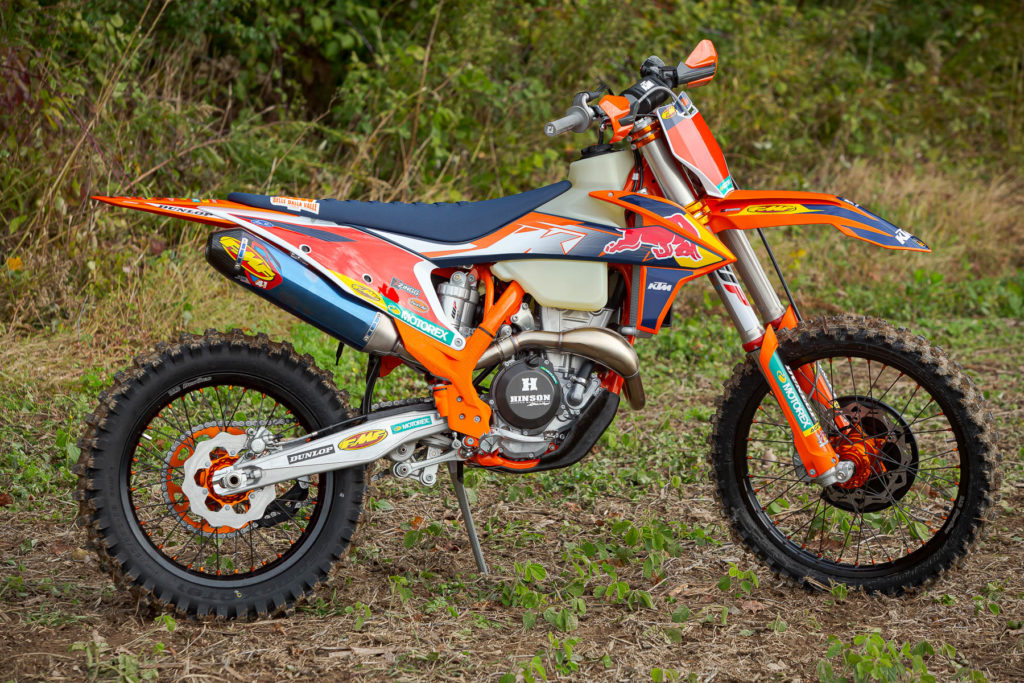
Andy and Dirt Bike Magazine do-it-all employee Travis Fant were parked next to the fleet, and after some milling about under the rig, the Bro Show told us it was to gear up and get ready for the shoot with Shan Moore. Fant and I agreed this would be our one dry occasion to get images for the written tests, so while Shan went with Jesse Ziegler of Cycle News and Alan Brown of Dirt Rider, we snapped frames of each other ripping around the field.
The ride from the rig to the mini track revealed the complete footprint of the GNCC campground, and it seemed like motorhomes, trucks, trailers, UTVs, four-wheelers, eMTBs, motorcycles, and random cars occupied every inch of the flat fields. Weekend warriors toured vendor row to purchase must-haves like roll-off equipped goggles or raincoats, while regulars of the scene reached deeper into their gear bags or storage cabinets for the same items. Everyone’s apparel, from gear to boots to helmets, all seemed to be relatively new, and soon it dawned on me that, yes, this is what millions of dollars spent through the Powersports Industry looks like.
Because Fant and I knocked out photos in minutes (a trait we picked up from icons Rich Taylor and Dennis Stapleton), we were free to play ride for a few minutes. Since this was our chance to “learn” what the woods would be like and to get a feeling for the bike in dry conditions, I spent most of my time cutting laps on the kid’s course. Almost immediately, I understood why the 350 is KTM’s preferred off-road racing platform. The engine’s mid-size displacement had enough top-end power to rip across cornfields with the throttle tapped, but it wasn’t too much to work in the dense woods. The handling package was just as well-balanced, as the steel frame felt nimble through the tight singletrack, stable when at speed, and connected to the ground all the time through the WP suspension. In a setting that’d put a 250F at its limit but make a 450F feel bogged down, the 350 was the perfect option.
Soon, Shan Moore flagged me down for photos, asked if there was anything in particular that I’d like, and aimed the camera as I went through two trees on one wheel; Shan’s shot was perfectly-timed and made me look better than I am. More than satisfied with the work, the two of us talked about what it’s like to follow the off-road scene compared to motocross, how GNCC had seen a boom in rider turnouts over the last five years, and the excitement that comes every weekend at the races. Shan has been doing this for decades, so hearing that he’s still into it after all these years shows how fun it is.
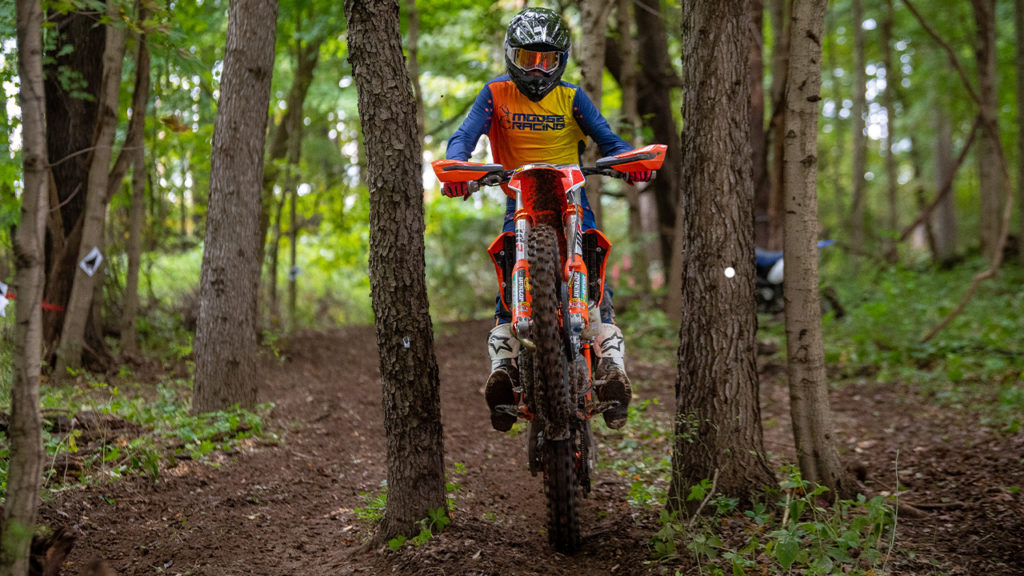
After seeing a pair of SCOTT Sports feather banners on the vendor row, I stopped at the rig to see if it was a local dealer selling roll-offs. Instead, it was John Knowles in the company van! Knowles is one of my close friends in the industry, the goggle guy I hoped to be if a spot in media didn’t work out, and he invited me to watch the afternoon’s ATV race under the tent. “Look at the Pro Class, Anton. We support almost all of them,” he told me just before they came into view. He was right; not only did most of the riders at the front of the pack have SCOTT goggles, but it also looked like the brand of choice for the entire quad category. With thousands of potential customers in one place and a lower cost of entry, it became clear why more brands are putting their marketing budgets in off-road categories.
Andy Jefferson took us to dinner on the way back to the hotel that night, and expectedly, our conversations mostly revolved around motorcycles. For Jefferson, a former racer who spent a good part of his working years outside the industry, KTM is the place to be. When other OEMs plan to split their efforts between California and the East Coast, KTM has put millions into a new office complex/workshop/training site in Murrieta. The number of Austrian-built bikes at tracks around the country proves their support of racing yields a return on the investment, a trend that’s even trickled down to the STACYC category, and they know that getting new riders on bikes will be key to keeping the industry going. It’s an effort they intend to achieve this through their battery-powered mini bikes, support of events like GNCC, and three distinct brands under the same corporate umbrella.
I grabbed the obligatory pre-race gallon of water from a gas station on the way back from dinner, repacked the gear bag, prepped a spare pair of Prospects, and waited for the rain to hit the hotel.
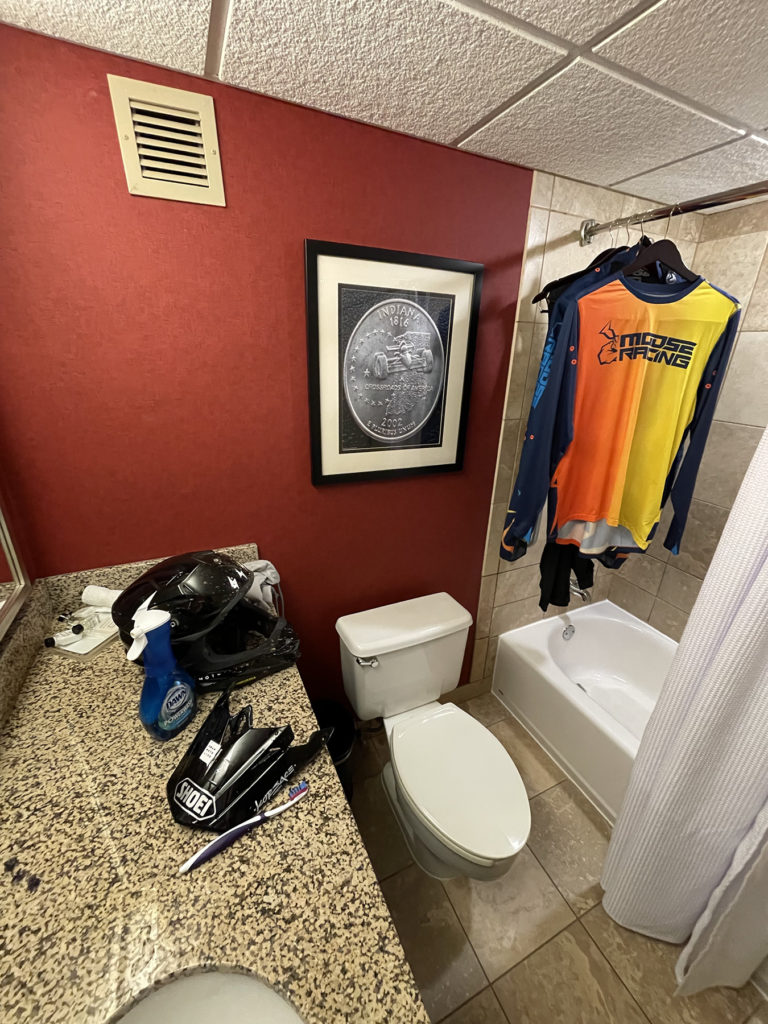
Reoccurring dreams of missing the race had me out of bed at 5 AM on Sunday, when surprisingly, the paved parking lot was still dry. The worst of the storms were now set to settle over Crawfordsville at 10 AM, the same time as my morning amateur race was scheduled to start, with three inches of rain expected to fall in a matter of hours. Determined not to get the truck stuck for a second time, I was out of the hotel by 7 AM, through Dunkin’s line by 7:30, and on the hunt for a parking spot on high ground at the track by 8. An overnight exodus of ATV riders opened up prime parking by the vendor row, and in no time, I had found a firm spot amongst the other day riders for the Dakota. A compact European SUV nearby caught my attention; attached to a three-rail trailer and complete with a KTM license plate, I figured it was either the setup of a Vet Class racer or young mini bike family.
KTM’s rider support truck was a hive of activity on race morning; mechanics helped riders with last-minute setup while executives from the North American office milled around the rig and chatted with our media group. Higher-ups like John Hinz and Doug Riipinen were there for two reasons: to celebrate if Kelley clinched the title and to compete in the Industry Class.
The rain had picked up to a steady clip by this point, so I walked back to my truck and got geared up beneath the camper shell. One of the riders pitted out of the Euro SUV pulled up soon after, but little about his setup matched what I had assumed it’d be. Instead of a newer orange bike with a seasoned Vet rider, it was a worn-out 80s-era Yamaha and a rider in his mid-20s. After a few warnings about the slick conditions on the track, he explained that the old bike was his riding group’s take on the LeMons car race: find a beater, make it run doing the bare minimum, and ride it as long as possible. His dad and uncle were still out there on the trails, one on a bike as equally ancient as the Yamaha, the other on a late-90s XR, each maintained with parts from the budget section of the Rocky Mountain ATV-MC catalog. Admittedly, the thought of riding an air-cooled bike at a GNCC had never crossed my mind, but their descriptions of the fun/cost/abuse made it sound enticing.
But that wasn’t my program for the weekend. Instead, I suited up in the Moose kit, which coincidentally matched the KTM perfectly, strolled over to the pit, set the sag with mechanic Braden Herr, and watched as the rain intensified to the point it fell sideways. “Braden, do you guys mind that we’re riding in this? They’re cool with the bike getting hammered?” I asked as he turned the spring.
“Oh, don’t worry about it,” he chimed back. “These bikes are allotted for, you’re good!”
We waited under the KTM canopy for as long as possible, but after group photos and a quick loop of duct tape around the boots, it was time to head to the track. The rain had tapered off to little more than a mist, and figuring we’d be waiting for only a few moments before the green flag flew, I passed on taking an umbrella with me.
Mistake. The rain had already taken a toll on the track and forced officials to remove popular parts of the layout, a delay that allowed another heavy band of rain to come through and soak the starting line. One helpful young rider, Ruhne Lee, and his dad offered their umbrella while we sat through the delay, but I was already soaked and bracing for what was in the woods.
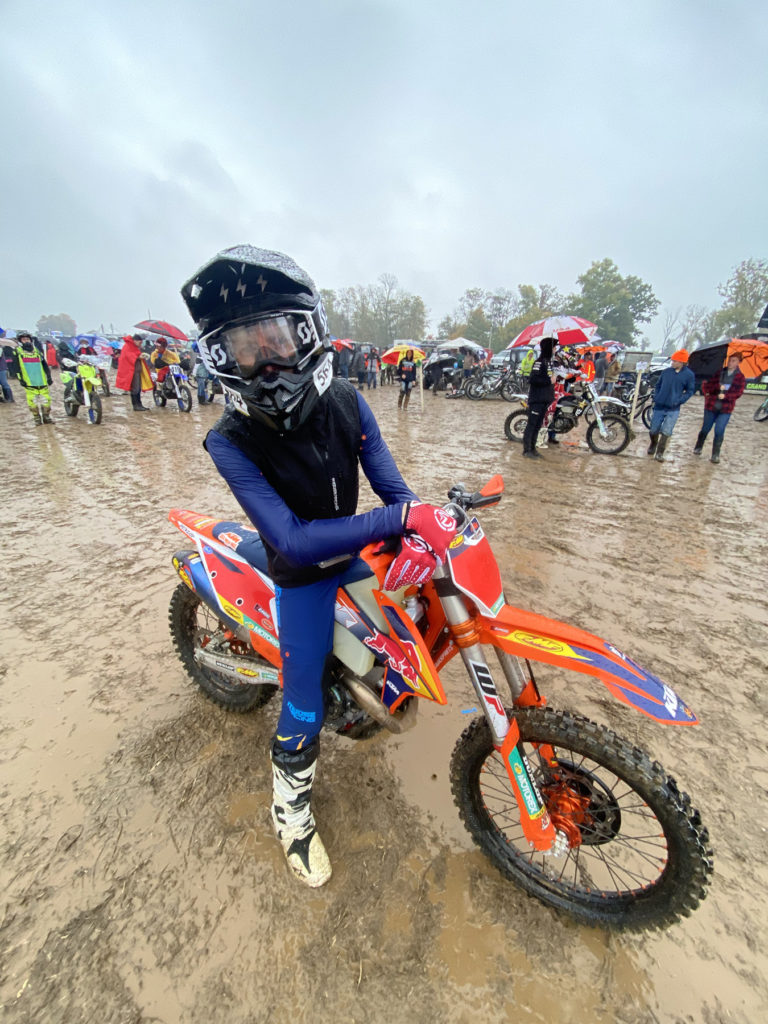
The hours from the green flag to my eventually DNF were a blur, literally and mentally. I had to ditch the roll-offs early in the race, a decision that was delayed as long as possible, only to be splashed by mud and water seconds later. Hundreds of bikes and inches of rain had turned the floor of the Indiana forest into a minefield of foot-peg deep ruts and exposed tree roots. At first, it didn’t seem so bad; I stayed with people from my line, followed the crafty lines away from the worst of the muck, and even passed a few people. Things were going good until a muddy high-side in a set of backwoods rollers put me into the brush and pinned beneath the bike. Dozens of riders went by while I worked to get my leg out of the jam until a nearby spectator noticed my struggle and lifted the bike. It would be the first of many tip-overs, one of the few that required assistance from the “mud fleas,” but after a push of the starter button, I was back on my way.
During the race, three instances forced me to think up with solutions and out of my comfort zone. Two of them occurred when the bike got caught on tree roots hidden in knee-deep ruts, and after repeated attempts to throttle up and over the obstacles only made the problem worse, I had to lift one wheel of the bike out of the hole while keeping the other from sliding back in. These physical efforts were, without question, the toughest time of the entire race.
The make-or-break moment happened on two steep hills. A dozen riders were scattered around the trail, searching for a smooth-dry line, some in better positions than others. The best route seemed to be right through the middle, where a tricky creek crossing in the middle of the valley would rob riders of momentum for the immediate ascent, and their repeated attempts had wasted the line down. Mike Ulrich of Yamaha appeared out of nowhere about this time, and together we looked at the carnage and came up with a plan to get me to the other side. Exhausted, unsure how much further the trail went, and certain that getting stuck here meant no way out, I considered taking the DNF.
While I weighed out the option, two riders charged through the direct path, cut to the left, and made it up the hill with ease. “Shit. It is possible.” I hit the starter button for what had to be the millionth time, brushed off the fact that the bike didn’t fire with the same vigor as before, and clicked into gear for my run. Sure, the creek crossing was a mess, but I got through it with some effort and was halfway up the hill before the drive gave out. Another helpful spectator helped prop the bike up and point it in the right direction, and after a jab of the button, the engine labored, turned over, and got me to the top.
The last tree root-sinkhole scenario was the worst of them all, and coincidentally, the bike was close to done by this time. Countless taps of the starter button, abuse of the hydraulic clutch and brakes, water crossings, crashes, and mud had taken their toll, and I realized that if the bike shut off again, it probably wouldn’t restart. I veered away from the destroyed race track and toward the nearby access road that led to the pit.
Sadly, the bike didn’t even make it that far; after the engine gave out, I pushed it the last twenty yards to the road and waited in the rain for a UTV to give us a tow.
Cold and completely spent, I handed the bike to KTM, apologized for my DNF and the damage, then walked back to my truck in the still pouring rain. After the muddiest pieces of gear were stripped off immediately and left on the tailgate, I huddled inside with the heater on high and regrouped. Sure, I had just had my ass kicked and put a bike through a torture test, but none of it was on my dime. That wasn’t the case for the thousands of others I saw in various states of disarray on the trail, most of whom will spend hundreds of dollars on parts as a result of racing in the rain and are already thinking of next year’s Ironman.
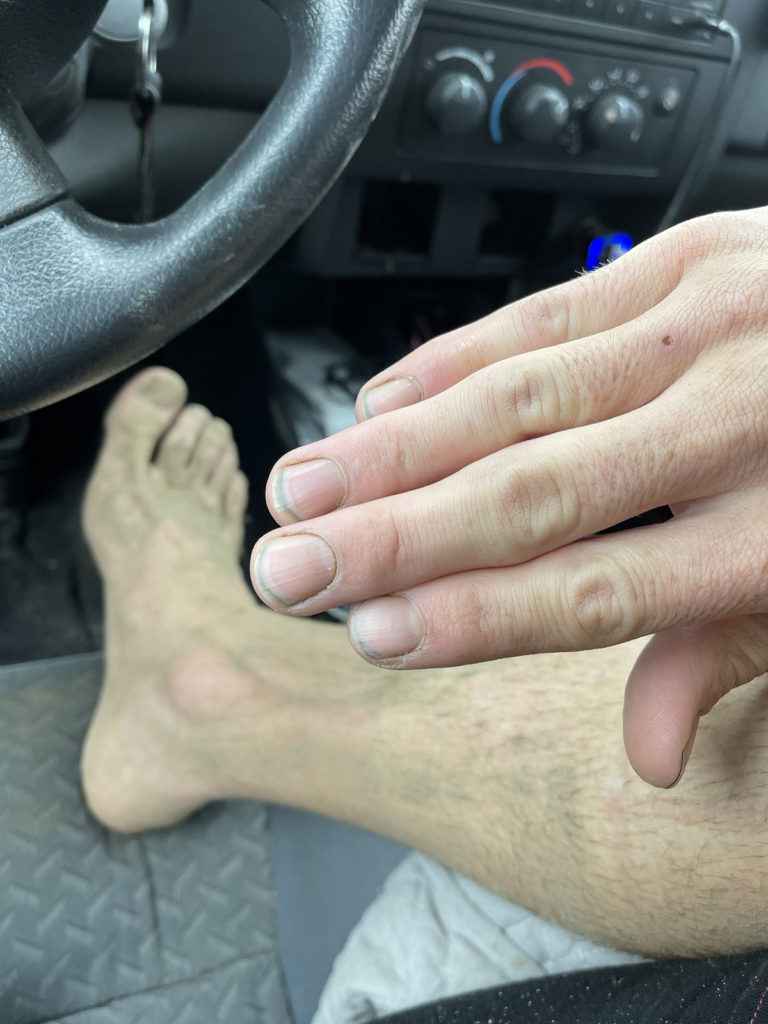
The 10 AM race did a number on the track. Parts of the property were considered impassible, and after some of the mellow creeks had turned into rushing rivers, race officials made the drastic decision to trim the Pro Race down to two hours and to eliminate sections like the Monster Mile. The pressure of Kelley and Baylor’s battle went up a few more clicks, and before the race started, a sense of uncertainty and excitement swept through the starting line.
By now, you know what happened with Kelley and Baylor: both riders got buried in the pack at the start of the race, and after drowning their bikes on the opening lap, were forced to make trackside repairs and mid-race part swaps. Kelley fared better, and after charging from around 90th place on lap one to 9th overall at the checkered flag, clinched the XC1 title. Baylor put in a valiant effort, but a smoked clutch and pit stop resulted in a less than stellar finish. Their struggles allowed Thad Duvall the chance to claim the win, his first since a springtime crash that left him with a collapsed lung/broken collarbone/fractured ribs, and offered Lyndon Snodgrass the chance to win the XC2 division and finish third overall.
The three-hour drive home gave me ample time to think about my ride and the GNCC series. Even though it was the hardest day I’ve ever had in the saddle of a bike, it was also the most rewarding, and that’s something every rider should experience. There’s a reason thousands of people spend their time and money following it around the East Coast, and I hope to try again soon.
